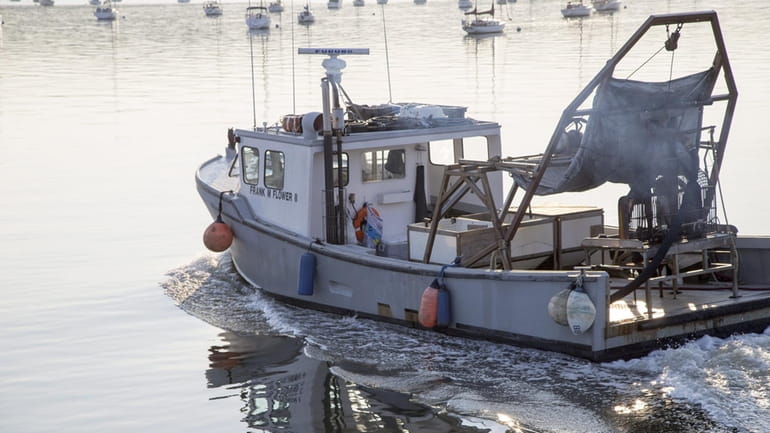Here's a road map for cleaning up Oyster Bay

A Frank M. Flower & Sons vessel off Oyster Bay. The town's 30-year lease of underwater land to the company ends in September, and what the town does with that acreage is a critically important. Credit: Howard Schnapp
This will be a momentous year for determining whether oysters and clams thrive again in Oyster Bay and Cold Spring Harbor.
In September, the Town of Oyster Bay’s 30-year lease of underwater land to Frank M. Flower and Sons will end, and what the town does with that acreage is a critically important question. A shellfish management plan being developed by the town with input from Friends of the Bay and other stakeholders must be based on science and what’s best for the ecosystem. Prudent actions will give the shellfish population the best chance of rebounding and again providing the historic benefit of helping improve water quality.
For nearly 400 years, Oyster Bay has been renowned for its shellfish. In 1639, voyager David DeVries wrote, “We found fine oysters there.” In recent decades, the two harbors have produced up to 90% of the state’s clams.
Sadly, pollution, overfishing and rising water temperatures have shrunk the areas open for shellfishing, the harbors are virtually devoid of oysters, and the clam population has plummeted. Most glaring: Oysters served at the annual Oyster Festival had to be imported from Connecticut.
This guest essay reflects the views of Eric Swenson, secretary of Friends of the Bay.
Unless significant steps are taken, our fine harbors may go the way of others like the Great South Bay, which had a thriving oyster population through the 1970s before they became virtually extinct.
When Frank M. Flower closed its hatchery in 2019, it stopped growing and planting 50 million oyster seeds and 50 million clam seeds a year. For the fifth year, the familiar dredges out on the bay are harvesting every clam they can find without putting anything back.
As the shellfish population has declined, so have the number of independent baymen working the open public lands around the leased area.
To reverse this doom-and-gloom scenario, several steps need to be taken immediately.
- The town needs to continue to move ahead with its plans to construct a large-scale hatchery to produce the shellfish needed to reseed the harbor. The town has hired a firm to design a facility to grow up to 100 million shellfish a year.
- The town must continue with its plan to set aside a significant amount of acreage to create “shellfish sanctuary areas” where shellfish can reproduce without interference or harvesting. Determining the best locations for these sanctuaries must be based on scientific studies. Creation of the sanctuaries would set aside a small amount of the bays, while leaving most of them open for commercial harvesting by the baymen and recreational digging.
While the town has vitally important decisions to make, fortunately it will have an array of resources to draw upon, including scientific studies of the bay by Friends of the Bay/Adelphi University and Stony Brook University’s School of Marine and Atmospheric Sciences; efforts to plant oysters in the bay by the Hempstead Harbor Protection Committee and by The Nature Conservancy and PEW Charitable Trusts; town initiatives to create oyster reefs near Beekman Beach and seek bids for 20 million seed clams and oysters; and an “oyster garden” program from the Oyster Bay / Cold Spring Harbor Protection Committee in which nearly 200 resident “oyster gardeners” will grow oysters in cages for planting in the bay.
While this seems like a lot of activity, to be successful every one of these efforts must be carried out and well coordinated by the town over the long-term. The future of the oyster and clam populations depend upon it.
This guest essay reflects the views of Eric Swenson, secretary of Friends of the Bay.
